Oyster 101 at Sea Salt
- Stevan Stanisic

- Nov 3, 2017
- 4 min read
The Sea Salt Restaurant Group is, as of this writing, restaurants featuring seafood as their primary focus in both Naples and St. Petersburg, FL.
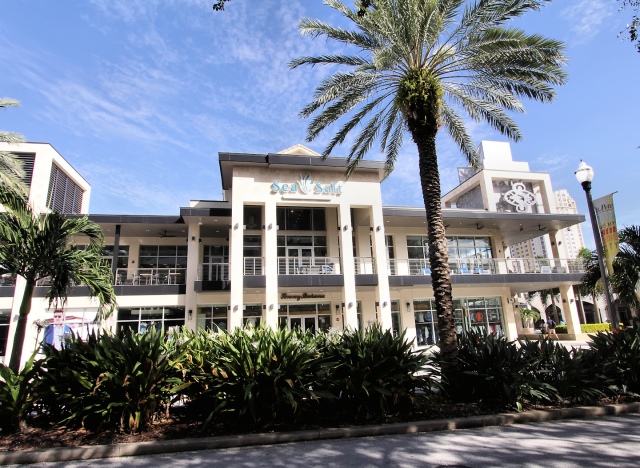 |
Sea Salt, St. Petersburg, FL |
Being from Southwest Florida, I have been to the Naples location numerous times but never to the location in St. Petersburg. The location in St. Petersburg is much more commodious than that in Naples and is located in Sundial St. Pete, an upscale shopping, dining and entertainment destination. Both Sea Salt locations have interesting themed dinners and other events. During a recent trip to St. Petersburg, I attended an event on oysters at Sea Salt, Oyster 101. This event was limited to 20 participants and is held 4-6 times per year.
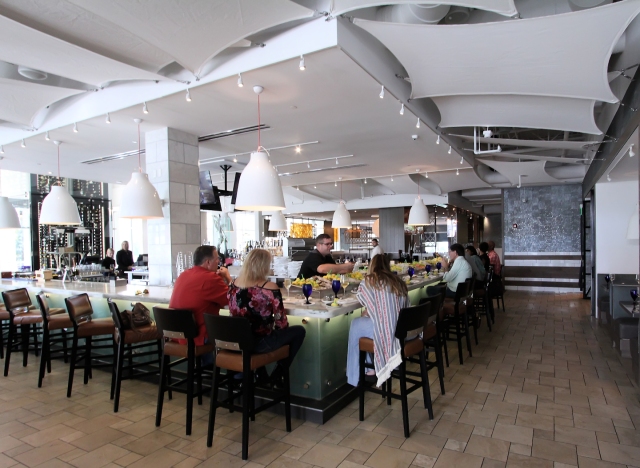 |
Attendees, Oyster 101, Sea Salt, St. Petersburg, FL |
The event was led by Executive Chef, Kenny Tufo. Chef Kenny was quite the erudite chef on all things oyster.
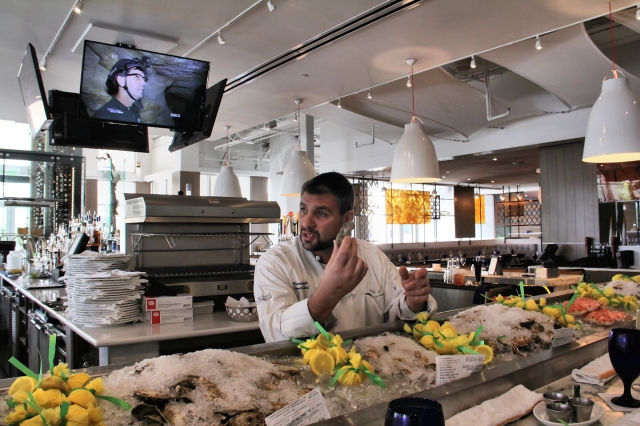 |
Executive Chef Kenny Tufo, Sea Salt, St. Petersburg |
The purpose of the introductory class was 5-fold. Participants learned how to shuck oysters, differentiate between types and taste, learn a bit about what oysters do and bring a few recipes home with them well suited for the home cook.
From a global perspective, there are 5 oyster Types. Ninety percent of these are farmed. There are Atlantic, which include Gulf oysters, and those more north such as blue point from New England and those from Canada. Pacific oysters are mainly found on the west coast of North America, as are Kumomoto, a Japanese import now farmed there. Olympians are also found on the west coast of North America, but have almost been decimated due to environmental conditions and predators. Finally there are European flats which originally were found in France and the United Kingdom. There are sub types of each oyster type, and the varieties are legion. This is in part due to the marketing efforts of oyster producers, but can also describe the waters or region they are farmed in.
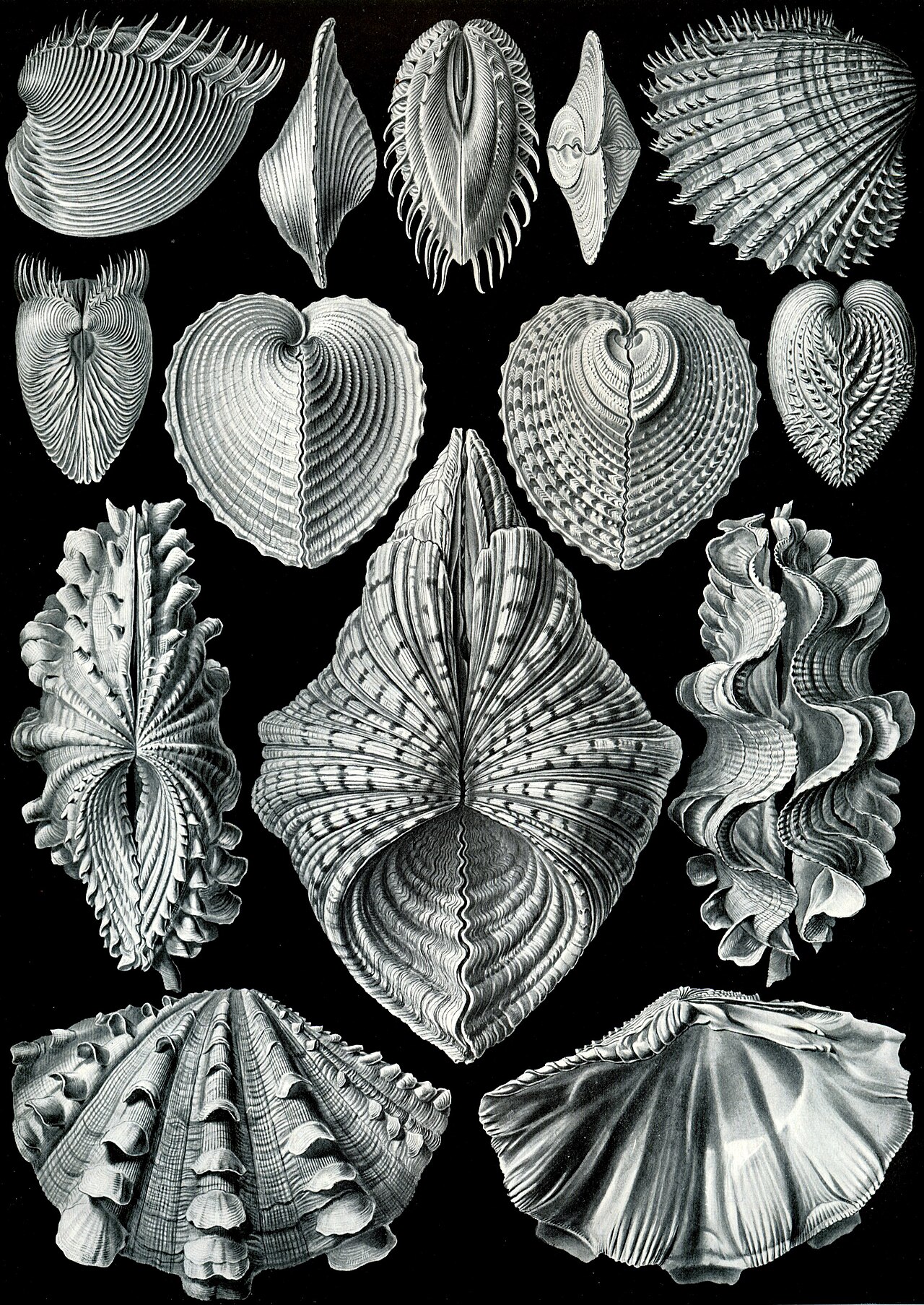 | ||
By Ernst Haeckel, A German Biologist- (1904), plate 55: Bivalvia; Courtesy ofWikipedia |
Oysters are bivalves meaning they are composed of “laterally compressed bodies enclosed by a shell consisting of two hinged parts.” Most bivalves are filter feeders. Filter feeders strain particulate matter and nutrients from their environment. Impressively, one 2 inch long oyster can filter up to 50 gallons of water a day, and are important in the maintenance of the ecosystem they inhabit. This also brings up the concept of Merroir, or the development of flavor from the local environment, in this case, the sea (water).
One of the first things we learned in Oyster 101 was how to shuck an oyster.
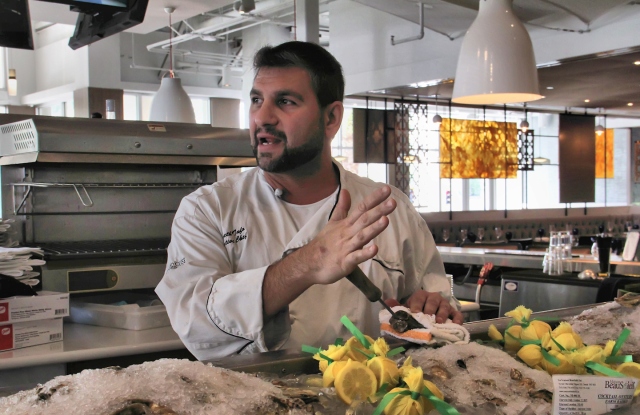 |
Shucking oysters, Oyster 101 |
Once you know what you’re doing, it’s relatively easy. In lieu of a heavy glove, we folded a bar towel into thirds and then folded it in half, making a pocket for the oyster. Taking an oyster knife, we placed the tip into the hinge of the oyster and moved the tip of the knife around until finding a pocket in the hinge. After that, all it takes is an up and down movement or twist of the oyster knife and voila, the shells pop apart. There is no brute force required. Oysters have what is know as adductor muscles on the top and bottom of their bodies that attach to the shells. All that needs to be done once the shells are apart is to sever these with your oyster knife and you are done.
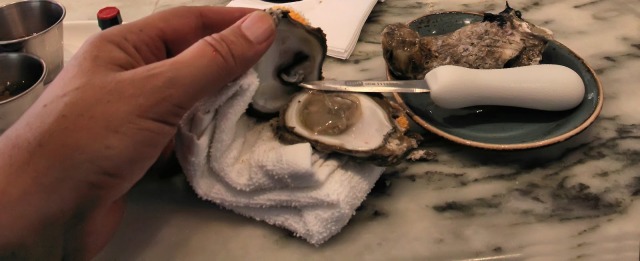 |
Shucked oyster, Oyster 101 |
A common misconception is that oysters should never be eaten in months without an “r”, just as white should not be worn after labor day! In the warmer months (May-August) oysters spawn, which leaves their flesh watery and thin. As almost 90% of the world’s oysters are now farmed, this is less of a health hazard but more a matter of texture and taste.
A number of condiments were available to us to accent the fruits of our labor, and were considered traditional oyster accompaniments. These were Tabasco sauce, fresh lemon juice, horseradish, cocktail sauce (horseradish and ketchup) and a Migonette sauce. The latter is a classic combination of shallot, cracked pepper and vinegar.
 |
Clockwise from left; horseradish, cocktail sauce, Tabasco and Migonette sauce |
All told we sampled Atlantic oysters (Gulf in addition to Beausoleil oysters from New Brunswick) and Fat Bastard oysters from the west coast. The latter oyster type had a very deep pocket for a shell on it’s lower side yielding an oyster that was not only meaty but had plenty of delicious, briny oyster liquor. We then traveled back to the east coast and finished with a Rock Harbor oyster found in the northern part of Cape Code. Delicious!
For those that are not oyster devotees, this was an excellent primer on the world of oysters. There were probably about 6 to 7 oysters served that day, but considering some of them retail for $4.00 each, the class was a bargain at $35.00 if not for the camaraderie alone. At present Sea Salt does not offer this class at their Naples location. After attending Oyster 101 this would be both an educational and entertaining addition to the Southwest Florida food scene.
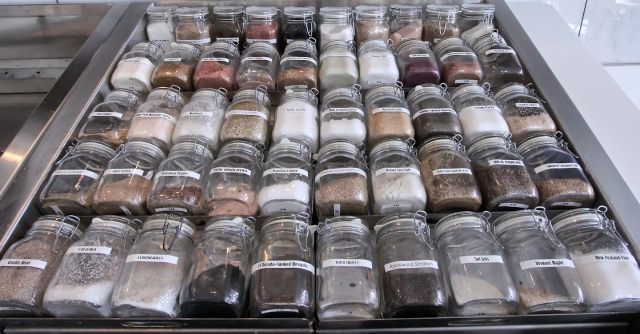 |
Sea salts, Sea Salt, St. Petersburg |
Aw shucks, it’s a wrap for another post on Forks.
Sea Salt
183 2nd. Ave. N.
St. Petersburg, FL 33701
(727)873-7964
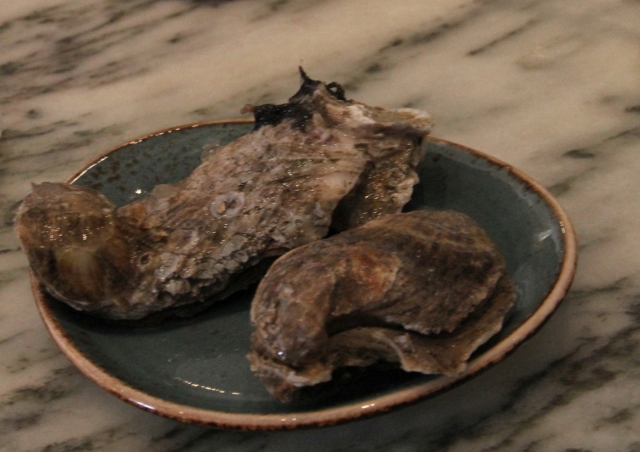 |
Atlantic (Gulf) oysters |
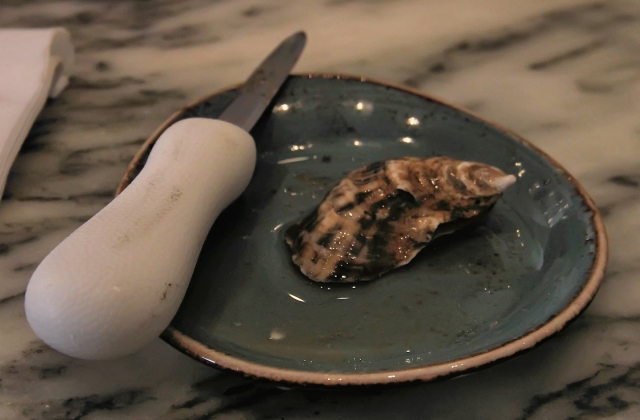 | |
Atlantic (Beausoleil) oyster |
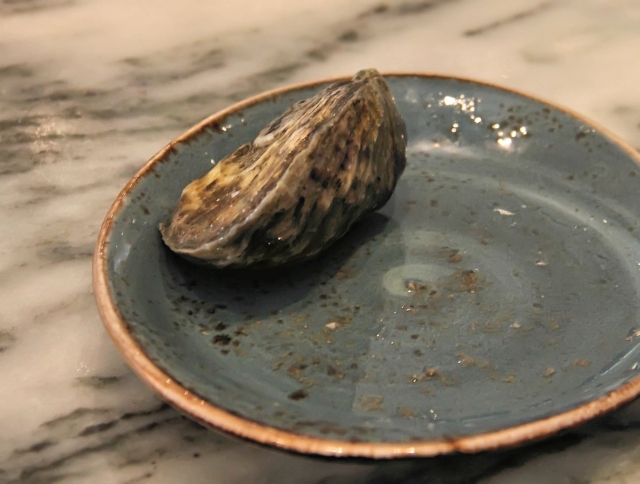 |
Pacific (Fat Bastard) oyster |
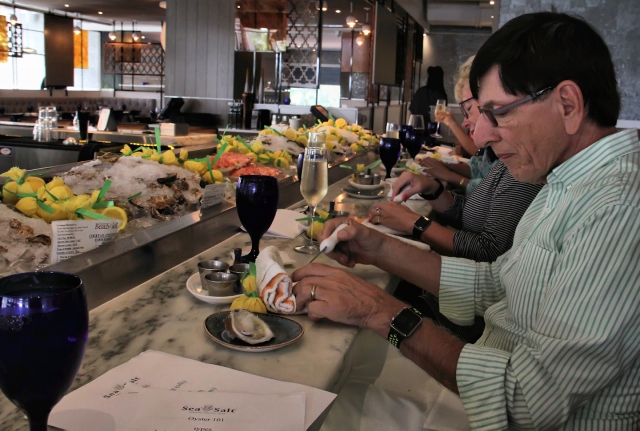 |
Shucking oysters, Oyster 101 |




Comments